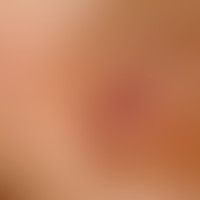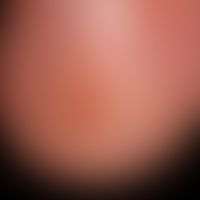
Candida paronychia B37.23

Melanoma acrolentiginous C43.7 / C43.7
melanoma, malignant, acrolentiginous. reddish, partly skin-coloured, slowly growing, coarse plaque, which has predominantly displaced the nail bed. there are also bizarre, black-brown hyperpigmentations. the nail plate is no longer existent except for a rest.

Onychogrypose L60.2
Onychogrypose: crumbly onychodystrophy with excessive thickening of the fingernail; previously known, long-standing mycosis fungoides.

Erythronychia longitudinalis; L60.9 L60.8

Onychodystrophy (overview) L60.32
Onychodystrophy. Traumatic onychodystrophy with splinter hemorrhage.

Lichen planus (overview) L43.-
Lichen planus verrucosus: red plaque with an irregular surface relief; the livid-red colour of Lichen planus is clearly visible at the edges.

Nail hematoma T14.05
Hematoma, nail hematoma. Incident light microscopy with red-blue discoloration of the nail.

Paronychia chronic L03.0
Paronychia chronic: chronic Candida paronychia. pat. with constant wet work.

Paronychia chronic L03.0
chronic paronychia: moderately painful paronychia existing for months. nail fold reddened and swollen. from time to time a purulent secretion empties under pressure. cuticles completely missing.

Erythronychia longitudinalis; L60.9 L60.8

Glomus tumor D18.01

Candida paronychia B37.23

Glomus tumor D18.01

Glomus tumor D18.01

Melanoma acrolentiginous C43.7 / C43.7
melanoma, malignant, acrolentiginous. incident light microscopy. streaky, brown (melanotic) hyperpigmentation of the nail plate. complicating superimposition: fresh, red splatter-like bleeding after still recallable trauma).

Nail hematoma T14.05
Hematoma, nail hematoma. reflected light microscopy with blue, sharply defined discoloration of the nail.

Nail hematoma T14.05
Nail hematoma: Apparently caused by repetitive trauma (probably triggered by a trauma from frontal trauma, e.g. during a football match), transverse bleeding, the growing nail area is normally stained.

Acute paronychia L03.0
Acute paronychia: blistery, circumferential, painfully throbbing paronychia (bulla repens) that has been present for a few days, caused by poygenic cocci.

Paronychia chronic L03.0
chronic paronychia: paronychia existing for months, with massive onychodystrophy. only slight painfulness. candida albicans was detected several times.





